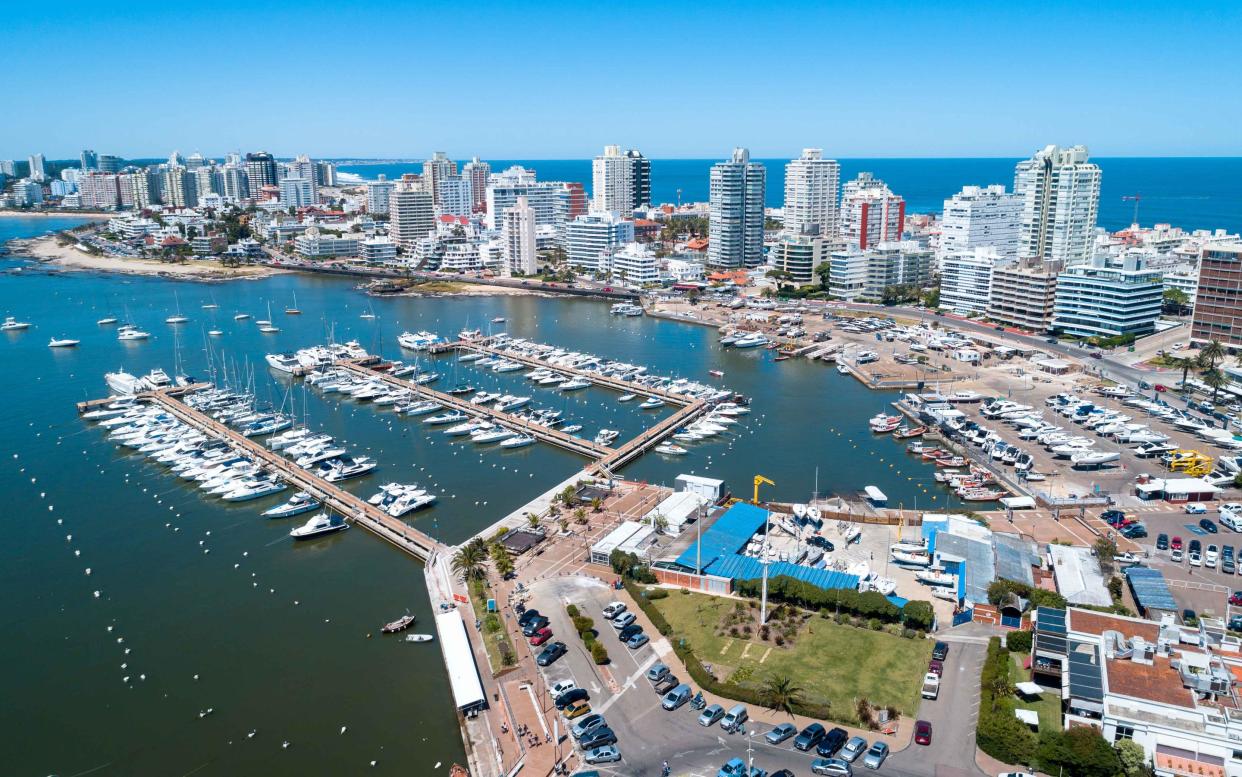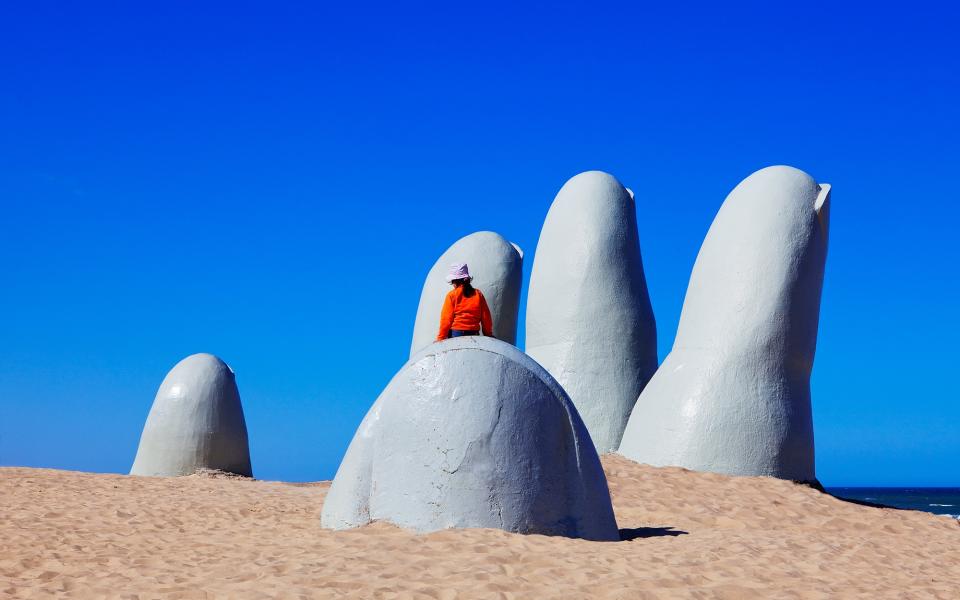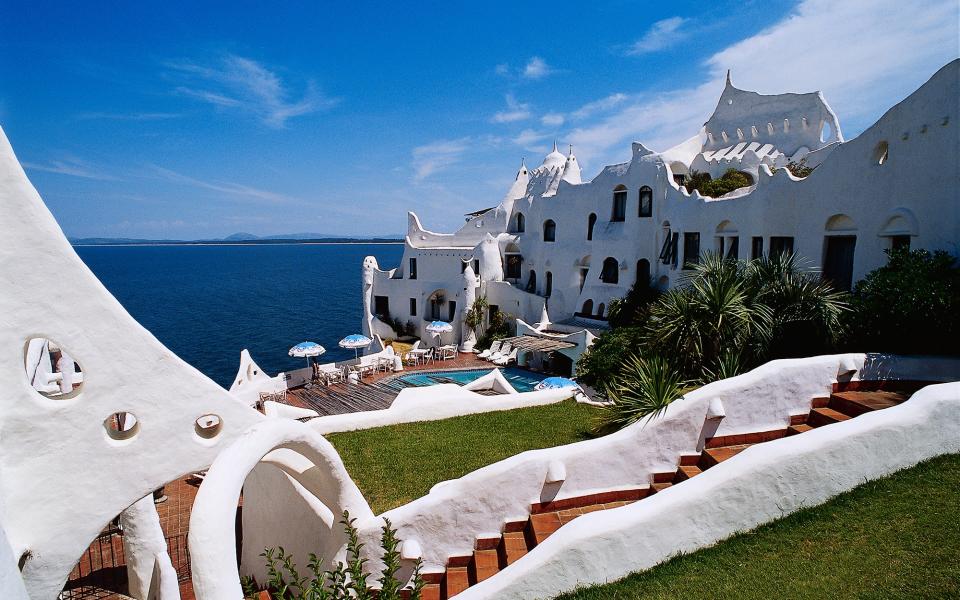A high-rise, high-energy resort city on the River Plate – an expert guide to Punta del Este, Uruguay

Why go?
Punta del Este has grown from tiny fishing village to somewhat obscure global conference town to major beach resort in the space of five decades. While the main centre and beaches are a sort of Brighton-meets-Nice for middle-class Argentines, out of town are the cooler spots of La Barra and José Ignacio, as well as some interesting galleries, estancias and other attractions.
Cruise port location
Punta del Este is, as the name suggests, at the far eastern corner of Uruguay’s River Plate coast, where the river opens to the Atlantic Ocean. The small port on the west side of the punta (peninsula) has five jetties for small vessels. Large cruise ships use tenders and ferry passengers to the city at the La Pastora jetty (muelle in Spanish) on Playa Mansa – the calmer of the two main beaches.

Can I walk to any places of interest?
From the cruise terminal you can easily get to the two main beaches and downtown shopping/dining area. The main thoroughfare for shopping and dining, Avenida Gorlero, is also close by.
Getting around
Punta is ideal for walking around, though it can get very hot during the summer months. To get to the smarter Atlantic resorts you’ll need transport.
What to see and do

Situated on a narrow peninsula 87 miles east of Montevideo, Punta del Este is a high-rise resort city, known for good restaurants, big-brand retail, casinos and some of the finest Atlantic beaches outside Brazil. Great dining and wining, fun people watching and energy make “Punta” as locals call it a buzzy stop on an Atlantic cruise.
What can I do in four hours or less?
The first thing to do in Punta del Este is what everyone else does: hit the beach. Playa Mansa (meaning “Calm”) is a long stretch of sand that curves right round the bay east of the centre, with gentle waves and lots of space for sunbathing; you can walk the six miles to the far end where it segues into Playa Pinares. You could even walk all the way to Casapueblo – see below – and catch a taxi back.
Playa Brava (“Wild”) on the eastern side is where to go if you fancy surfing. On this side you’ll also see the striking sculpture of La Mano (The Hand): five giant fingers bursting through the sand, constructed by Chilean artist Mario Irarrázaba.
Some cruises offer bike tours of central Punta del Este, also well suited to the beach promenades.

The second site to visit on a short stopover is Casapueblo, 10 miles west of the city centre. MSC does a four-hour “Punta del Este and Casapueblo tour”, riding by bus through smart residential areas including Cantegril, Parque de Golf and San Rafael, with a photo stop at the beach before heading to Punta Ballena, to visit Casapueblo. Clinging to the cliffside, it was the home and atelier of the late local painter Carlos Páez Vilaró. Outside it’s a sort of white Moorish, Gaudí-influenced fantasy, while inside are his vivacious works, inspired partly by Uruguay’s African traditions. Casapueblo is also home to a restaurant and hotel.
Exclusive and a wee bit posey, La Barra and José Ignacio pull in local celebs over summer. The gastronomy is better in these two resorts.
MSC offers excursions to a local classic car museum (three-and-a-half hours) and to Bikini Beach at La Barra.
Other options for a four-hour stay are Isla de Lobos and the Viña Eden winery. Celebrity offers its guests the flexibility of private car hire with a driver, for four-eight hours.
What can I do in eight hours or less?
Food and drink are the main themes of popular longer excursions, as this corner of Uruguay is home to wineries, olive oil producers and estancias/estates where traditional an al fresco asado (barbecue) is a great experience.
Celebrity’s four-and-a-half-hour barbecue-themed tour takes guests by bus to the Viña Edén winery for a cooking/grilling class followed by a tasting of meats and other cuts, with local wines as accompaniment. A six-and-a-half-hour alternative – offering some brain food – is to see the excellent paintings and sculptures at the Ralli Museum, continuing to upmarket La Barra de Maldonado to visit the Fundación Pablo Atchugarry, dedicated to the work of the locally renowned sculptor. It concludes at the Narbona (aka Narbonne) restaurant, a quiet retreat surrounded by vineyards, where a BBQ lunch is served (not to be confused with the company’s wine estate in Carmelo, far to the west).
Eat and drink
Uruguay is as mad about meat as Argentina; a typical barbecue features huge steaks, chicken, sausages, offal and grilled cheese and peppers. A lunchtime classic is chivito, a bun filled with flash-grilled steak, mozzarella, tomatoes and olives, and perhaps bacon and eggs, accompanied by chips. Empanadas, pastas and milananesas (breaded chicken or veal escalopes) are also popular. Punta’s location means fish and seafood are also widely available.
Don’t get back on the ship without…
Checking out the excellent woollens and other craft items at the two local branches of Manos del Uruguay (manos.com.uy), a non-profit founded in 1968. Punta is also good for swimwear. If you’re allowed to take it on board, pick up a bottle of Tannat, the wine Uruguay is making popular across Europe and the US.
Need to know
Flight time
There are no direct flights from the UK to Punta del Este. The fastest routes are to fly via Madrid to Montevideo and take a fast bus, or to fly to Buenos Aires and take a short jet hop or long ferry trip (seven-and-a-half hours; coloniaexpress.com) to Punta del Este. Either way, you’re looking at 16-20 hours of travel. (Buenos Aires’ international airport is an hour’s drive from the domestic airport and ferry terminal.)
Safety
Uruguay is considered to be one of Latin America’s calmer, generally crime-free countries. The FCO notes: “Around 20,000 British nationals visit Uruguay every year. Most visits are trouble-free,” adding, “Most criminal incidents occur in Montevideo.” Roads between major towns and resorts are, on the whole, pretty good; there’s a zero tolerance limit for driving under the influence of alcohol.
Best time to go
Late October to April, the summer season, is sunny and hot, peaking in Jan and Feb, which is also when visitor numbers skyrocket. The main cruise season also falls in summer; if possible avoid visits in January, as well as Christmas, New Year and Easter.
Closures
Shops are open every day of the week, as are malls. Museums and restaurants tend to have their day off on Monday.


